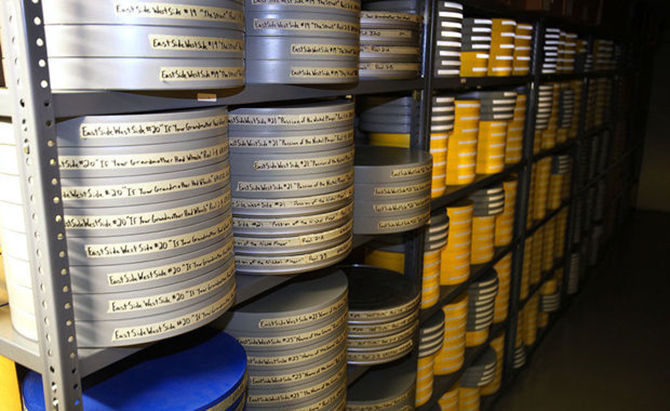 The WCFTR film archive was recently recognized and praised by the Madison newspaper the Wisconsin State Journal as one of the “100 defining objects of Madison.”
The WCFTR film archive was recently recognized and praised by the Madison newspaper the Wisconsin State Journal as one of the “100 defining objects of Madison.”
In daily columns running since July, the State Journal has described the special quality of life that Madison offers by identifying 100 key objects that are a distinctive to the city’s physical and cultural environments. They have ranged from long-standing Madison Mayor Paul Soglin (something of an institution himself) to the beautiful Lakeside Terrace at the UW Memorial Union.
Certainly the WCFTR archive is a rich cultural resource that deserves a place in any civic pride list. Launched in the 1960s through a joint initiative of the UW-Madison Communication Arts Department and the Wisconsin Historical Society, the WCFTR developed over the years into one of the nation’s largest and richest archives of cinema, television, and American theater history. The centerpiece is the massive WCFTR film collection, over 20,000 movies and television episodes, preserved in a film vault beneath the Historical Society Building on campus.
WCFTR research patrons come to Madison from all parts of the globe to consult our archival collections, and first-time visitors sometimes ask about the historical fortuities that brought these international treasures to a medium-sized city in the upper Midwest. (They usually pose the question shortly after commenting how much they enjoy their time in Madison.) Madison is home to two separate state-level institutions with a shared interest in research and outreach, the Historical Society and the University. They forged a partnership to develop a major research and outreach center in the performing arts. Then the foresight and initiative of the Center’s early leadership, most importantly Communication Arts Professor Tino Balio, developed the world-class archive that became Center’s key resource. And for the last half-century the Historical Society and more generally, the city of Madison, have been gracious hosts for the Center’s many visiting researchers.
The Center in turn engages in public outreach, sharing resources and expertise with members of the community. For example, the next planned outreach event is a Madison “Home Movie Day” project scheduled for October 18 and spearheaded by our Head Film Archivist Amy Sloper (http://www.centerforhomemovies.org/hmd/).
Madison is a great movies town, with a sizable population of cinephiles. They appreciate the WCFTR archive as a civic institution, and we in turn appreciate the recognition.
Vance Kepley, Jr.
Director
